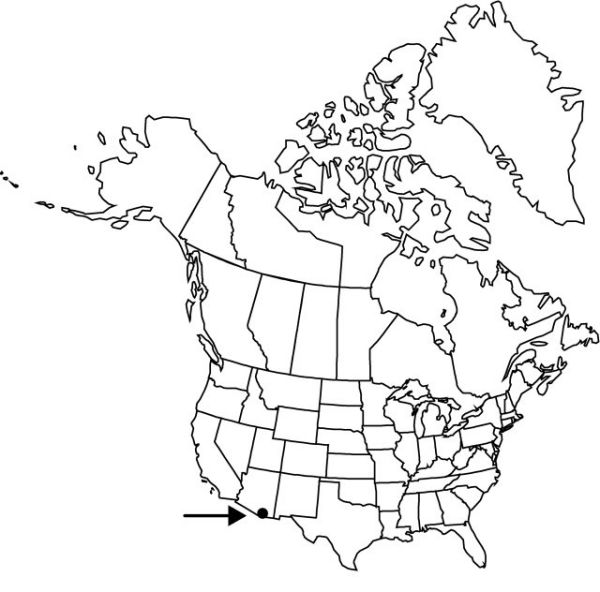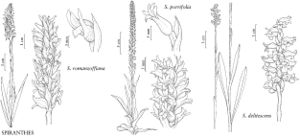Spiranthes delitescens
Rhodora 92: 215, figs. 1, 2. 1990.
Plants 20–48 cm. Roots few–several, descending, slenderly tuberous, to 5 mm diam. Leaves persisting through anthesis, basal, on proximal 1/2 of stem, ascending to spreading, linear-lanceolate to oblanceolate, to 18 × 1.5 cm (rarely wider). Spikes loosely to tightly spiraled, 3 flowers per cycle of spiral; rachis rather densely pubescent, trichomes without glands pointed, glandular obviously stalked, glands equaling or narrower than stipes. Flowers curving through horizontal, white, somewhat gaping and open with wide-spreading lateral sepals; sepals usually connate at base, 6.5–8(–9.9) mm; lateral sepals curving outward throughout lengths, usually directed somewhat downward; petals linear to linear-oblanceolate, apex obtuse; lip creamy or very pale yellow centrally, oblong, with variably evident median constriction, 5.8–7.9 × 3.2–4.9 mm, apex broadly expanded with extensive transverse pleats, distal surface mostly glabrous adaxially; basal calli prominent, stout; veins few, branches mostly wide-spreading; viscidia linear to linear-lanceolate; ovary 3–6 mm. Seeds monoembryonic. 2n = 74.
Phenology: Flowering Jul–Aug.
Habitat: Cienegas, wet riparian meadows, stream banks
Elevation: 1400–1500 m
Distribution

Ariz.
Discussion
Of conservation concern.
Spiranthes delitescens is an amphiploid product of hybridization of species in the n = 15 and n = 22 lineages. Although its origin is unknown, on morphologic grounds C. J. Sheviak (1990) proposed S. vernalis and S. porrifolia as possible parents.
